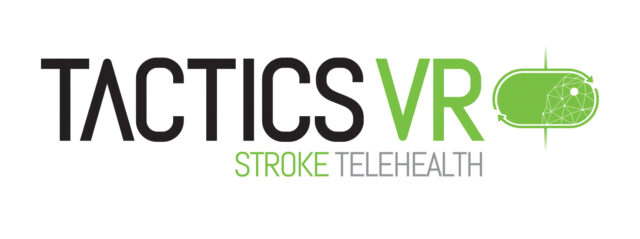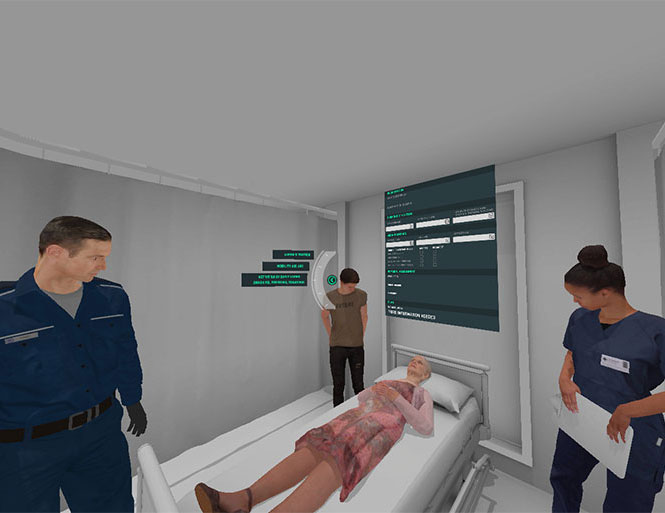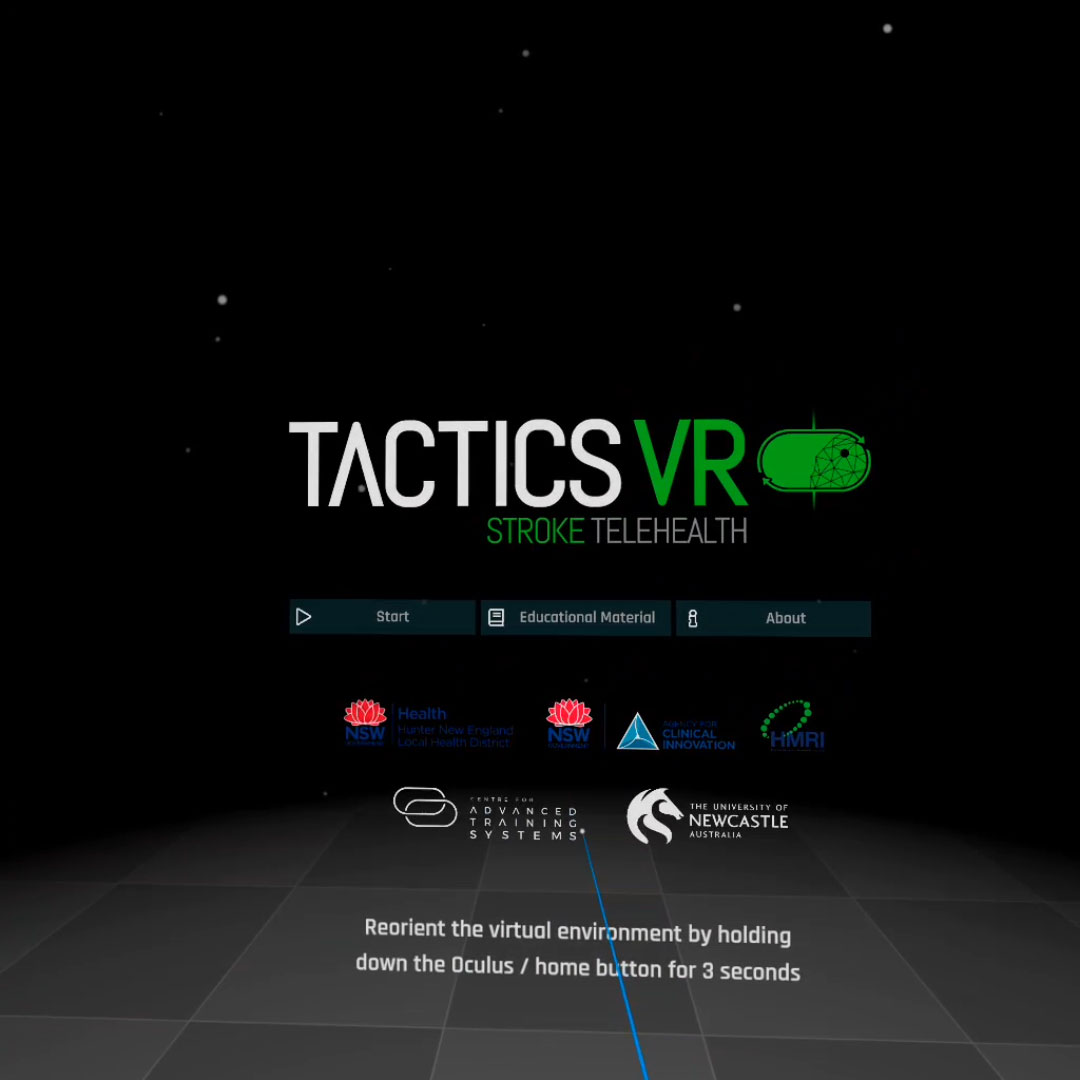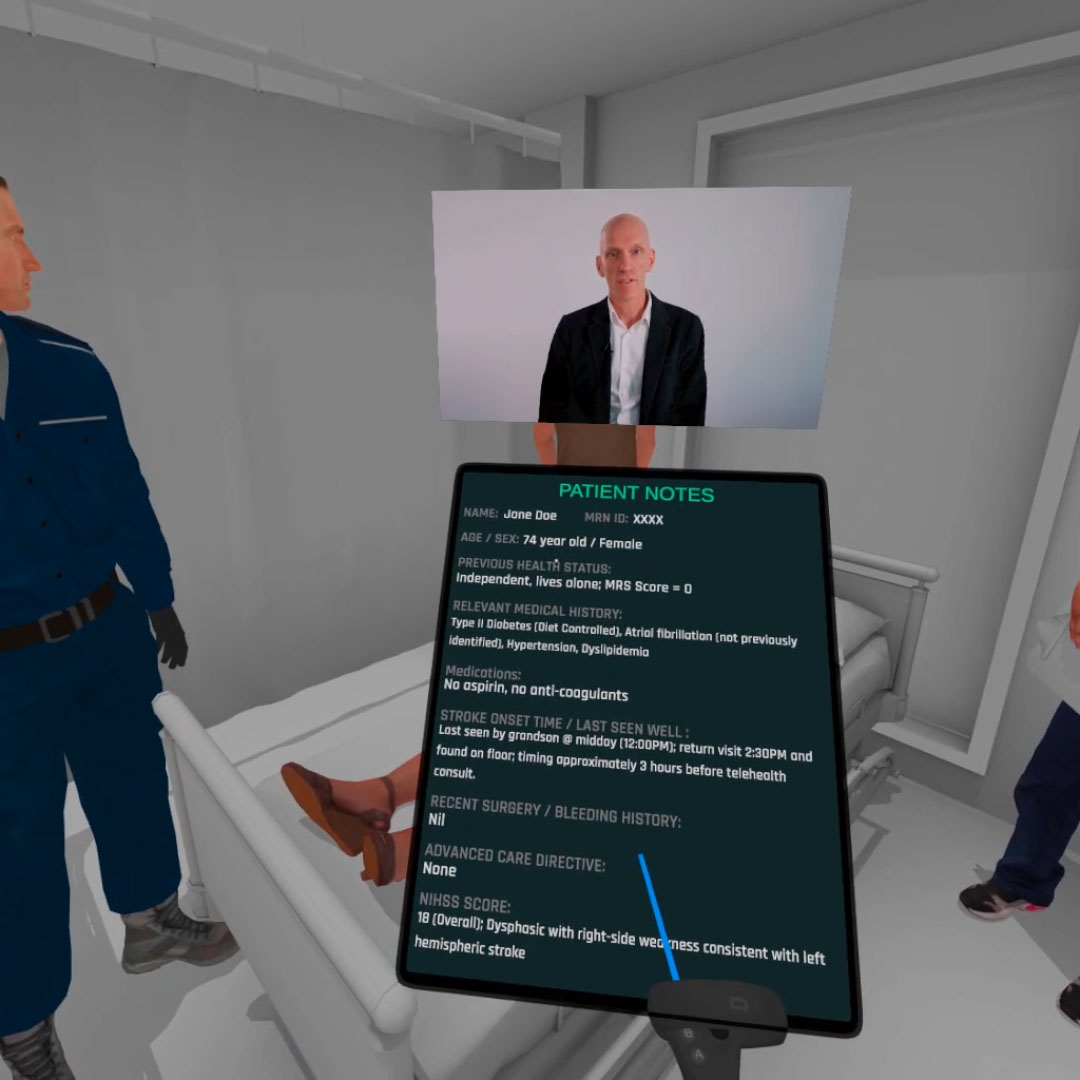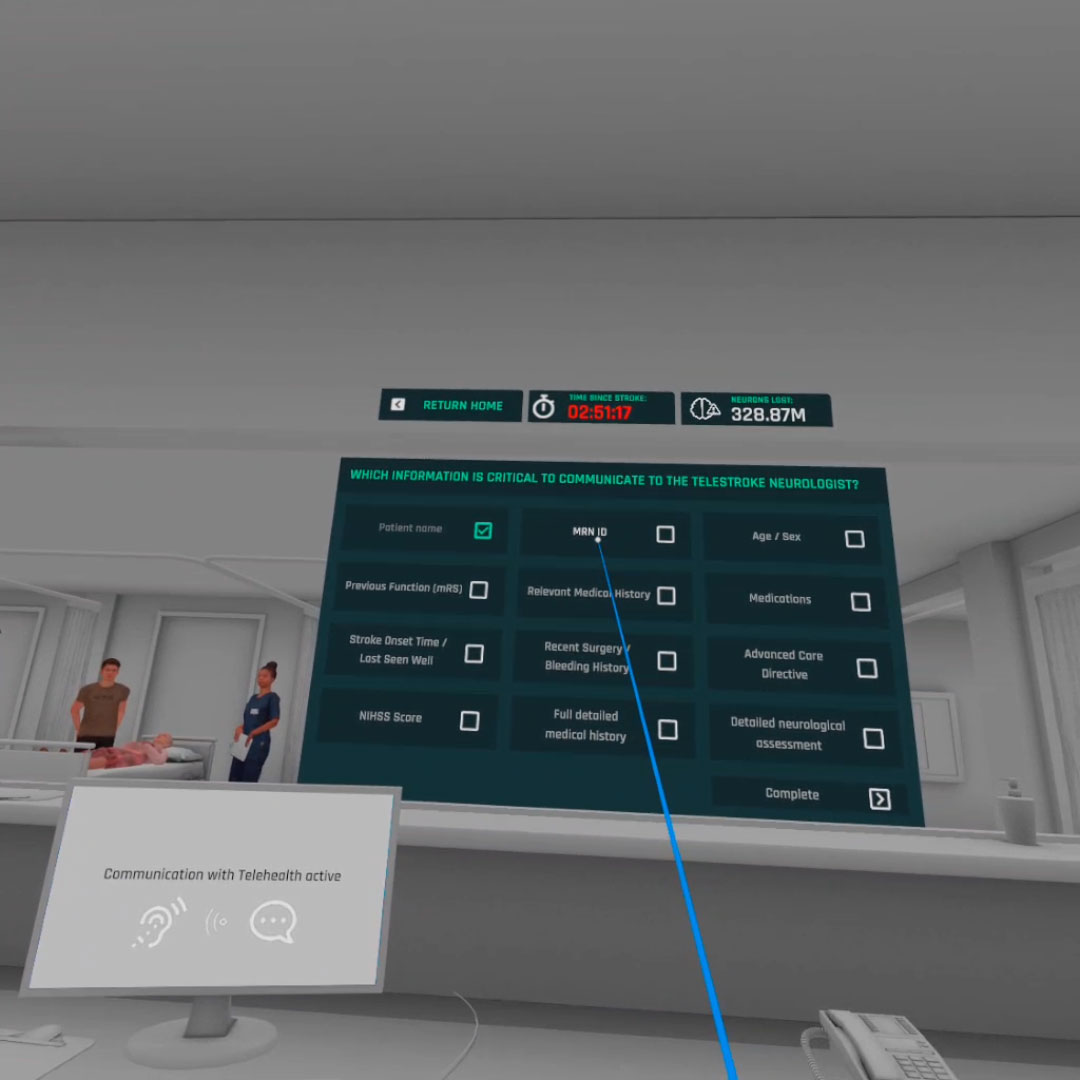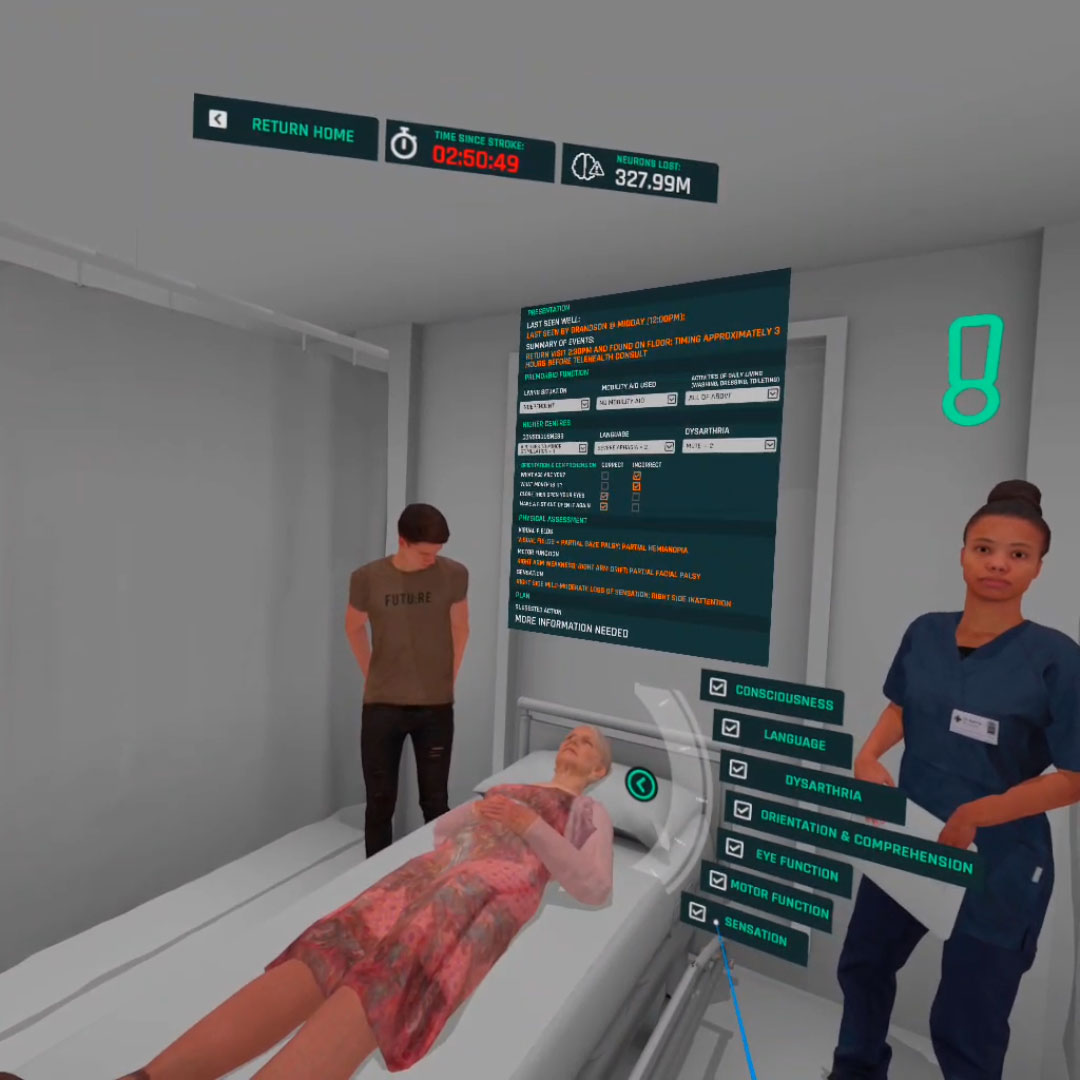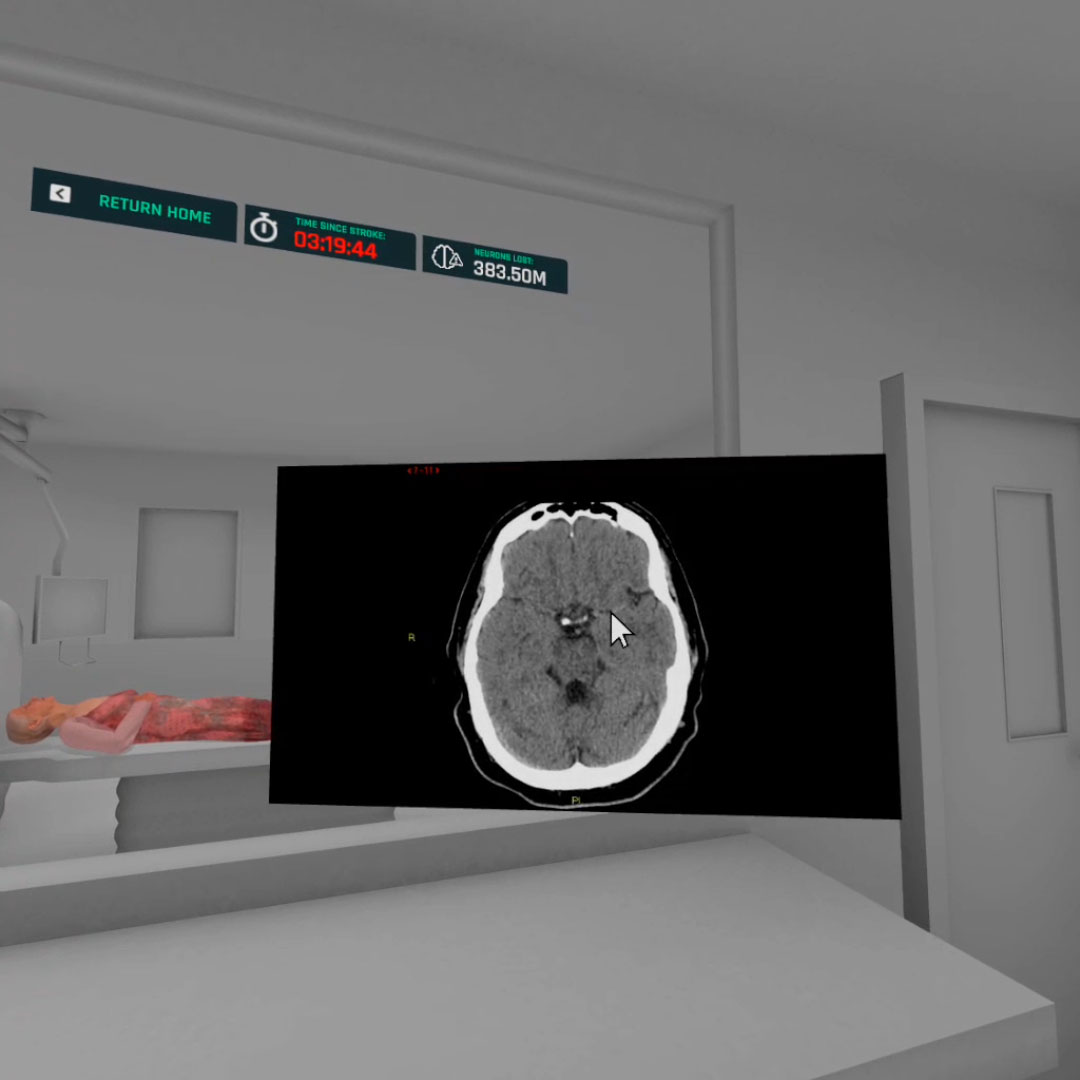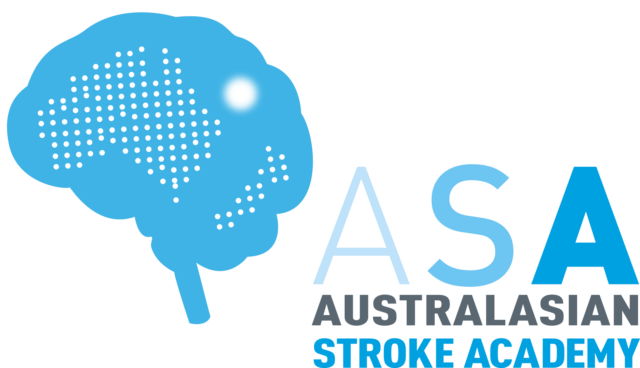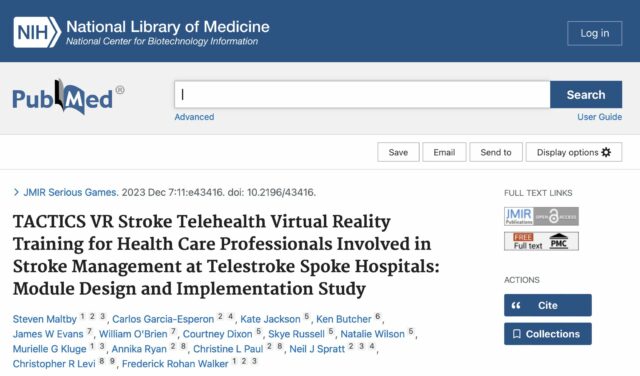In TACTICS VR – Stroke Telehealth, VR users are guided through a real-world stroke patient case with specific emphasis on telestroke communication and consultation processes. In TACTICS VR – Stroke Telehealth, users walkthrough a real stroke case with an emphasis on telehealth interactions.
Content is organised across the following scenes:
- Opening
- Introduction & Instructions
- Initial Patient Assessment
- Telehealth Consult #1: Initial Assessment
- Radiology Imaging
- Telehealth Consult #2: Radiology
- Telehealth Consult #3: Consent & Treatment
- User Feedback
TACTICS VR – Stroke Telehealth has been developed and implemented into NSW hospitals starting from April 2021. Research describing the design and roll-out are available in the publication below.

